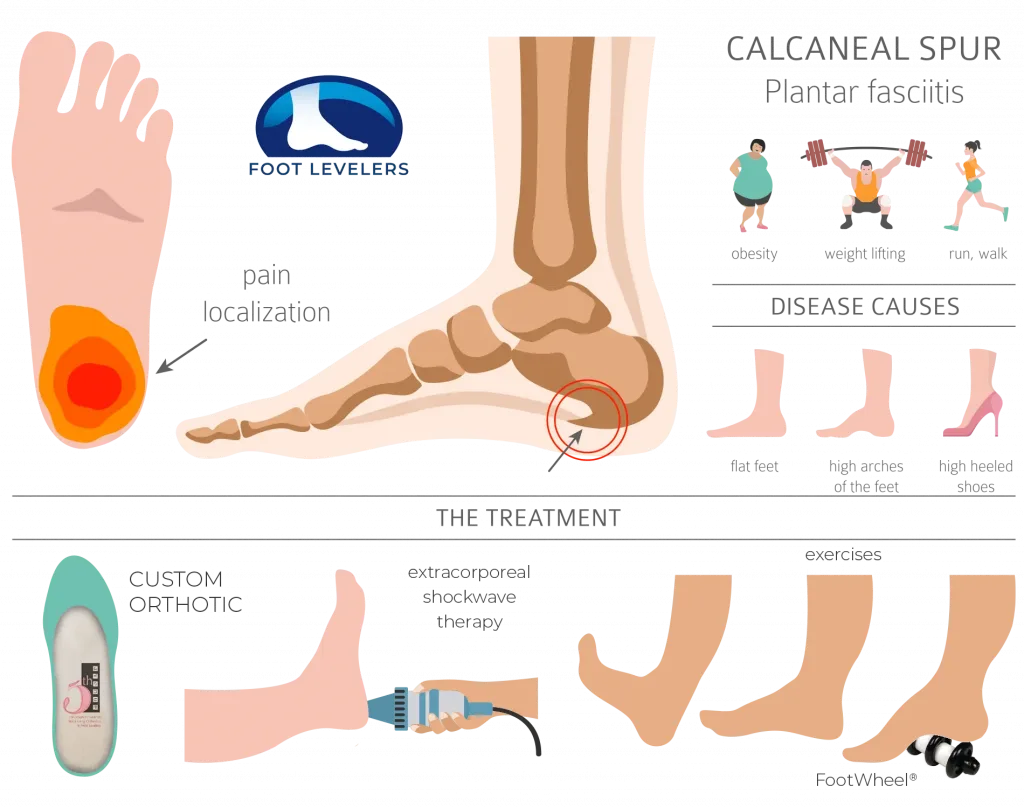Does the bottom of your foot hurt? It might be plantar fasciitis, a common cause of heel pain.
The good news is yes, compression socks can help with plantar fasciitis. They can alleviate plantar fasciitis by keeping the muscles and ligaments elongated. Furthermore, they protect you from oxidative stress. With this treatment, plantar fasciitis symptoms can improve fairly quickly.
Here in this guide, we are going to discuss in detail about how they are effective in relieving plantar fasciitis so that you get the right direction of treatment!

Why does Plantar Fasciitis happen?
Inflammation of the plantar fascia may cause plantar fasciitis. At the bottom of the foot, you will find a thick band of tissue called the plantar fascia. It occurs when the tissue becomes irritated and inflamed.

While this condition can be painful, it’s usually not serious and can be treated with rest and home remedies to relieve pain such as icing or applying a heating pad to ease discomfort.
How Do Compression Socks Help with Plantar Fasciitis?
While there are many different treatments for plantar fasciitis, compression socks may provide some relief from symptoms like swelling and pain in your feet.
These socks decrease swelling by improving circulation in your legs by applying pressure at key points along with your leg’s lymphatic system (the body’s natural drainage system).
This helps remove excess fluid from your limbs so they feel less swollen after wearing them for several hours during the day or night while sleeping.
Why Should You Consider Them To Heal Plantar Fasciitis?
They are comfortable
Compression stockings are comfortable. As the name implies, they’re designed to provide gentle pressure around your legs and feet—all while giving you a cozy feel.
They can be worn with or without shoes, which means that you can wear them during physical exercise or any other activities where you might normally use compression gear (like biking).
You may also want to consider wearing them at night if you have trouble sleeping on your feet; some studies show that plantar fasciitis is more common in people who sleep on their stomachs.
To get the most out of your socks, try wearing them over or under another pair of socks for optimal comfort!
They help improve blood circulation
Compression socks help improve blood circulation. They do this by increasing the pressure on your legs and feet as you walk, which helps improve blood flow to your toes and ankle. This can help reduce swelling in the foot, preventing it from becoming inflamed or worse.
They also increase oxygen delivery to the foot, allowing you to walk more comfortably even when suffering from plantar fasciitis. The compression also helps bring nutrients like oxygen into the tissues, helping bones heal faster and muscles recover faster than they would without compression stockings.
Another benefit of wearing compression stockings is that they can help increase circulation within the rest of your body as well:
Less swelling in the feet
Compression socks are a great option for people who can’t elevate their feet. They’re not a substitute for elevating your feet, but they can help you recover even if you don’t have the option to put your feet up.
These stockings will give your swollen, painful feet some relief and make it easier for you to walk around without pain. If you want to learn more about them, check out our post on the benefits of wearing compression socks.
Compression socks can reduce inflammation and foot fatigue
In general, compression stockings are effective in reducing inflammation and foot fatigue. They also help by reducing pain, swelling, fatigue, and stress on your body. In addition to this, they reduce the risk of injury as well as falling down (especially in older adults) which are often caused by plantar fasciitis.
Read: How To Choose Compression Socks [Ultimate Buying Guide]
Tips For Wearing A Compression Sock For Plantar Fasciitis
If You Have Any Medical Issues Or Concerns About Wearing Compression Socks Often, Contact Your Doctor First Before Trying Anything New In Terms Of Treatment Methods.
Also Read Our Compression Socks Reviews:
FAQs – Find more about your concerns!
Ankle and heel pain are the most common symptoms of plantar fasciitis. It may be difficult to put weight on your foot when first getting up in the morning but it should ease as the day goes on. There will often be tenderness at the bottom of your heel and along the sole of your foot. Exercising regularly may cause some discomfort but will normally help relieve the pain.
It can be a struggle to balance that desire to “push through” the pain of plantar fasciitis with the reality that your foot needs a little rest and recovery time now and again. Compression socks for Plantar Fasciitis work to help you get that rest as they help reduce swelling in your feet, which may allow your pain level to be reduced.
There’s a lot of research to back up compression therapy for a wide variety of medical problems, ranging from acute illness to chronic illnesses. It’s ironic, though, that patients with the most severe symptoms may be the ones who should skip this treatment. There are three contraindications that if present makes no sense to treat with compression therapy: severe pain, untreated deep vein thrombosis, and contraindications to compression bandage use.
Conclusion
By using compression socks for plantar fasciitis, you can help improve blood circulation and prevent further damage from happening in the first place! It’s important not only what type of shoe you wear but also how often they are worn throughout the day as this can affect foot health long term.


